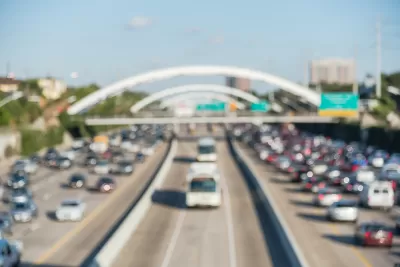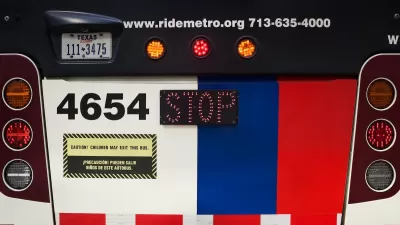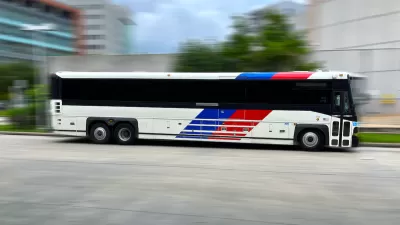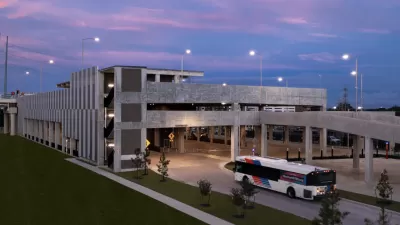The city's transit agency hopes a more comprehensive and connected rapid transit network will encourage more Houstonians to use buses.

Despite a lackluster performance from the recently opened Silver Line, which, as Houston's first bus rapid transit (BRT) line, "limps along with an average of fewer than 700 passengers on weekdays this year," Houston Metro is moving forward with more BRT projects that officials hope will connect more parts of the city. "As the region’s core becomes more dense with homes and offices, officials believe large buses shuttling between set stops are expected to connect core commuting areas to park and ride hubs, making transit more convenient for suburban and inner-loop residents simultaneously," reports Dug Begley for the Houston Chronicle.
"The preferred I-10 route plan also details how Metro plans to use its existing stations and lanes along Capitol and Rusk so those platforms can pull double-duty while closing them to other vehicles. Left unresolved is how buses will make the move from I-10 to downtown streets, which will depend on the final plans for a massive rebuild of the central city freeway system and Interstate 45."
"Crucially, the project also links more neighborhoods and amenities to rapid service, along I-10 where officials plan stations at Studemont, Shepherd-Durham and Memorial Park." As Begley writes, "The busway, a two-lane elevated road right next to the freeway, would allow buses to move from the Northwest Transit Center near Loop 610 and I-10 to the central business district without being stuck in traffic."
See Begley's article, linked below, for details on the project's proposed route and options for the future of Houston's rapid bus lines.
FULL STORY: Metro to bridge rapid transit between Uptown, downtown Houston along I-10 route

Alabama: Trump Terminates Settlements for Black Communities Harmed By Raw Sewage
Trump deemed the landmark civil rights agreement “illegal DEI and environmental justice policy.”

Study: Maui’s Plan to Convert Vacation Rentals to Long-Term Housing Could Cause Nearly $1 Billion Economic Loss
The plan would reduce visitor accommodation by 25% resulting in 1,900 jobs lost.

Why Should We Subsidize Public Transportation?
Many public transit agencies face financial stress due to rising costs, declining fare revenue, and declining subsidies. Transit advocates must provide a strong business case for increasing public transit funding.

Wind Energy on the Rise Despite Federal Policy Reversal
The Trump administration is revoking federal support for renewable energy, but demand for new projects continues unabated.

Passengers Flock to Caltrain After Electrification
The new electric trains are running faster and more reliably, leading to strong ridership growth on the Bay Area rail system.

Texas Churches Rally Behind ‘Yes in God’s Back Yard’ Legislation
Religious leaders want the state to reduce zoning regulations to streamline leasing church-owned land to housing developers.
Urban Design for Planners 1: Software Tools
This six-course series explores essential urban design concepts using open source software and equips planners with the tools they need to participate fully in the urban design process.
Planning for Universal Design
Learn the tools for implementing Universal Design in planning regulations.
Caltrans
Smith Gee Studio
Institute for Housing and Urban Development Studies (IHS)
City of Grandview
Harvard GSD Executive Education
Toledo-Lucas County Plan Commissions
Salt Lake City
NYU Wagner Graduate School of Public Service





























